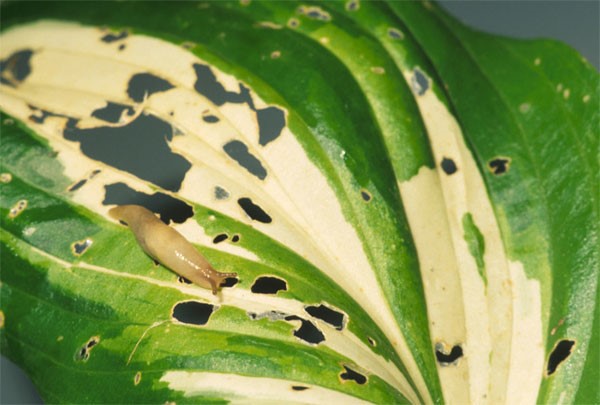As you
may have noticed, we are having a very wet spring here in Northeast
Kansas. While the yards are greening up and flowers are blooming, you
may have also noticed a thriving slug population in your gardens and
flower beds. What are these slimy things, and what do I do about them?

There
are several options for getting rid of slugs, and a few suggestions for
reducing the risk of slug habitation. We offer Hi-Yield Slug and Snail
Bait, Sluggo, and Diatomaceous Earth in our garden store. The Slug and
Snail Bait temporarily paralyzes the slug until it dries out from the
sun. With Sluggo, the snail takes the bait to its hiding place and
within 2-6 days, it dies. It can be used in organic garden, and is safe
for use around kids and pets. Diatomaceous Earth is a natural approach
to killing slugs. Also known as insect dust, it causes the slugs to
dehydrate. Do not breathe it in as it can be harmful to your lungs. Each
of these has a different approach to killing slugs, but should have the
same results in the end. Some people have also found that collecting
slugs and dropping them in soapy water or creating beer traps have also
been effective for slug eradication. On the other hand, watering in
the morning as opposed to the evening can create less of an appealing
environment for slugs. Also, removing as much debris and potential
hiding places for slugs altogether is another approach.
Remember,
while slugs will always be something that we have to deal with, there
are effective ways to keep them from ruining all of our hard work in our
gardens and flower beds. And as in most situations, the earlier we
detect their presence, the sooner we can work to limit the damage they
do.

No comments:
Post a Comment